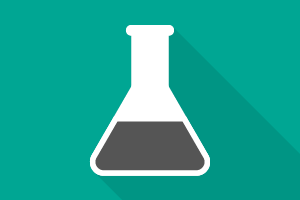Classroom Resources: Kinetics
Filter by:
26 – 35 of 35 Classroom Resources
-

Combustion, Chemical Change, Catalysts, Acid Base Reactions, Chemical Change, Balancing Equations, Classification of Reactions, Observations, Chemical Change | High School, Middle School
Demonstration: Stop & Go Gases
In this demonstration, students will witness the ability of carbon dioxide to extinguish a flame and oxygen to feed a flame. They will also be introduced to the concept of catalysts. This demonstration could also be used as an opportunity to practice writing and balancing equations and classifying chemical reactions.
-

Reaction Rate, Graphing, Temperature, Concentration | High School, Middle School
Lab: Starch-Iodine Clock Reaction
In this lab, students perform an iodine clock reaction to determine how concentration and temperature effect the reaction rate.
-

Reaction Rate, Chemical Change, Reaction Rate, Observations | Middle School, Elementary School, High School
Demonstration: Simple Kinetics
In this demonstration, students will see that different food dyes react with bleach at different rates.
-

Reaction Rate, Experimental Design, Scientific Method, Observations, Chemical Change | High School, Middle School
Lab: Reaction Rate
In this lab, students will explore factors that effect reaction rate and develop a general statement that describes how the factors (temperature, particle size, and concentration) effect the rate based on experimental data. This is an inquiry-based activity.
-

Solubility, Saturated/Unsaturated/Supersaturated, Mixtures, Reaction Rate | High School
Lab: Rate of Solution
In this lab, students observe how particle size, solvent temperature, and agitation affect rate of solution.
-

Reaction Rate, Reaction Rate, Acid Base Reactions | Middle School, High School
Lab: Plop, Fizz: How to Affect the Rate of a Chemical Reaction
In this lesson, students will react Alka-Seltzer tablets with water. By varying the temperature of the water, particle size of the Alka-Seltzer, and concentration of the Alka-Seltzer they can see the effect on the rate and strength of the chemical reaction.
-

Chemical Change, Observations, Chemical Change, Reaction Rate, Interdisciplinary, Physical Change, Reaction Rate | Middle School
Lab: Chemical Weathering in Geology
In this lab, students will explore the differences between erosion, weathering and chemical weathering. They will complete a lab experiment that simulates chemical weathering on 4 different types of rocks. They will also learn how to use the Mohs Hardness Test to analyze the results.
-

Catalysts, Reaction Rate, Experimental Design, Scientific Method, Chemical Change, Error Analysis, Balancing Equations, Percent Yield, Stoichiometry, Chemical Change, Measurements, Error Analysis, Dimensional Analysis | High School
Lesson Plan: Catalysis & Catalytic Converters
In this lesson students will be introduced to catalysts while expanding their knowledge of chemical reactions and stoichiometry. They will first learn about catalytic converters and then be challenged to create the best “catalytic converter” of hydrogen peroxide to oxygen gas in an inquiry-based activity.
-

Indicators, Le Châtelier's Principle, Acid Base Reactions, Chemical Change, Chemical Change, Limiting Reactant, Reaction Rate, Observations, Chemical Change | High School
Demonstration: Milk of Magnesia Magic
In this demonstration, students will observe a color change in a milk of magnesia solution as vinegar is added.
-

Reaction Rate, Reaction Rate, Chemical Change, Acid Base Reactions | Middle School
Lab: Bath Bomb Chemistry!
In this lab, the students will work in cooperative groups to investigate how to make a scented, effervescent bath bomb and explore the chemistry needed to create them. Groups will test a variety of different variables in order to compare the reaction rate of each sample. Students will use the results to determine which variables are optimal for making and using bath bombs.